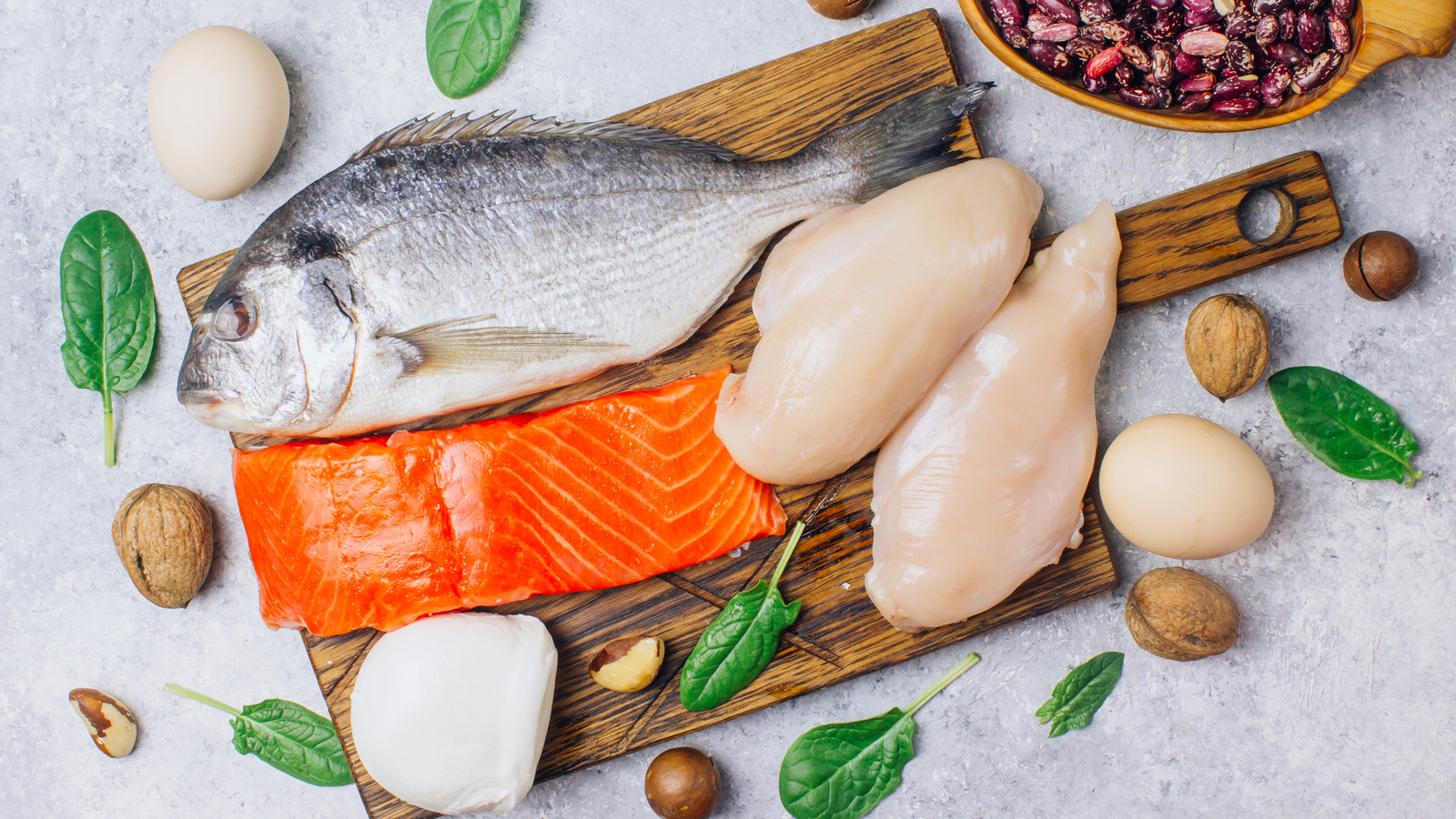Protein seems to be mentioned everywhere these days. It’s the zeitgeist of many social media influencers, from touting the protein levels of cottage cheese to promoting protein-injected snacks like ice cream and popcorn. But if you’re wanting to get back to basic, everyday foods and away from marketing, there are so many easy ways to get protein from simple ingredients, even if you’re on a budget. While beef usually gets all the credit for being protein-packed, it actually has about the same protein content as most parts of a chicken and many types of fish. Both chicken and fish are great sources of protein with other nutritional benefits, but which ranks highest in overall protein? Looking at both, chicken appears to have the edge over fish, depending on which part you’re consuming, though some types of fish have more protein than chicken.
For all measurements, we’ll be referring to 100-gram portions of each food, which is the equivalent of about 3.5 ounces. Chicken breast contains 32 grams of protein per 100-gram serving, and has the most protein out of all parts of the chicken. Thighs have 25 grams of protein, followed by drumsticks and wings, which have slightly less protein at 24 grams. The protein per ounce of actual meat itself doesn’t vary much, but it’s the fat content that modifies the protein amount in different cuts. Chicken thighs and drumsticks, for example, have much more fat than the breast. Parts of the chicken with more fat also contain more calories than breast meat, making the latter best suited for bodybuilding or weight loss.
Both are excellent protein sources
Salmon has 25 grams of protein per 100 grams. Salmon, like many other types of fish, also has additional nutritional benefits, like omega-3 fatty acids, B vitamins, and selenium. Wild-caught salmon is leaner and generally has a bit more protein, while farmed salmon is a bit fattier and therefore carries slightly less protein per serving. Tilapia boasts 26 grams of protein per 100 grams. This white fish is a lean protein, but it has lower omega-3 levels than most fish and more omega-6 fatty acids, which may contribute to inflammation and are considered to have fewer health benefits. So be sure to consume tilapia in moderation. Tilapia is almost always farmed, but avoid eating tilapia that comes from China, as they’ve come under intense scrutiny for their tilapia farming practices.
Cod, another flaky white fish, has about 22 grams of protein per 100-gram serving; Atlantic cod has slightly less protein than its Pacific counterpart. Like salmon, cod is high in minerals and B vitamins; however, it’s lower in omega-3s as it’s a leaner fish. Cod is also low in mercury, which can be a concern when eating an abundance of seafood.
While chicken breasts are the clear winner in the protein contest, most other parts of the chicken, like thighs and drumsticks, are almost equivalent to fish when it comes to protein per serving. No matter which you choose, though, both chicken and most types of fish are great sources of protein. Check out Ina Garten’s tips for cooking chicken and our favorite ways to cook fish to bring out the best in these basic proteins.






